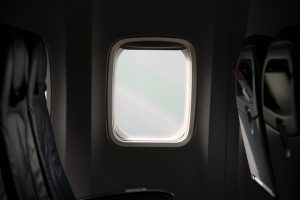
Commercial airplanes typically rely on an environmental control system (ECM) to maintain a comfortable cabin environment. When flying at 30,000 feet, airplanes must pressurize their cabins. Pressurization allows for a safer flight experience for passengers by allowing them to breathe more easily.
Boeing and Airbus — along with other aerospace manufacturers — typically use an ECS to pressurize their cabins. To learn more about the three main functions of an ECS, keep reading.
#1) Cabin Pressurization
As previously mentioned, ECSs are designed to pressurize cabins. There’s a correlation between altitude and air density. At higher altitudes, the air is less dense. This means it contains less oxygen, which can make it difficult to breathe. Fortunately, most high-altitude commercial airplanes have pressurized cabins.
The ECS is responsible for providing this pressurization via bleed air. Excess air is “bled off” from the airplane’s turbine engines. Some of this air is then pumped into the airplane’s cabin to achieve an appropriate pressure level. The ECS will maintain this pressure level.
#2) Air Supply
The ECS supplies the airplane’s cabin with air. Not all of the air is recirculated. On most commercial airplanes, a little over half of the cabin air comes from outside of the airplane. The remaining air is recirculated through a special type of filter known as a high-efficiency particulate air (HEPA) filter.
The ECS is responsible for providing this air supply. It uses excess air from the engines. As the ECS pumps this air into the cabin, the pressure of the cabin will increase. The cabin, of course, will also benefit from clean, outdoor air that’s mixed with the HEPA-filtered recirculated air.
#3) Temperature Control
The third function of a typical ECS is temperature control. The air isn’t just less dense at higher altitudes; it’s colder. At 30,000 feet, in fact, the air temperature is about 30,000 degrees Fahrenheit. Therefore, the ECS must regulate the temperature of the air before pumping it into the cabin.
Most ECSs work in conjunction with a pre-cooler to warm the air. Pre-coolers are heat exchangers. The ECS will blow air over a pre-cooler, at which point the air will absorb heat from the engine. The newly warmed air will then travel to the cabin.
In Conclusion
ECS perform three main functions: They pressurize the airplane’s cabin, provide the cabin with air, and they control the temperature of the cabin air.



